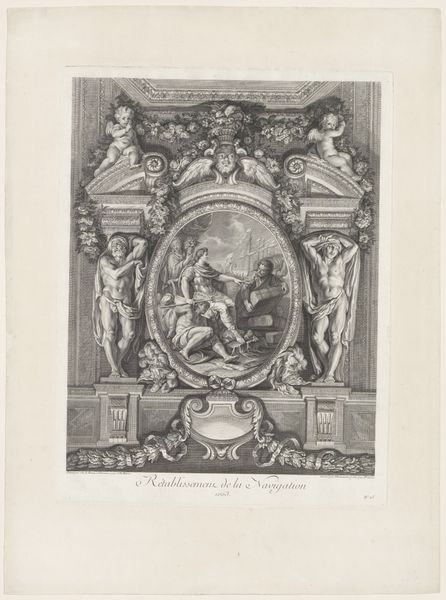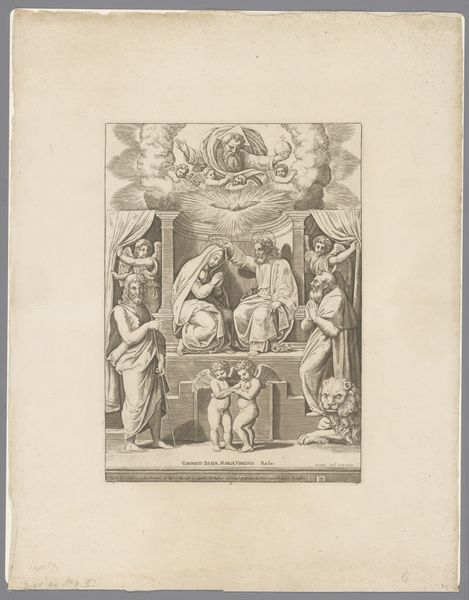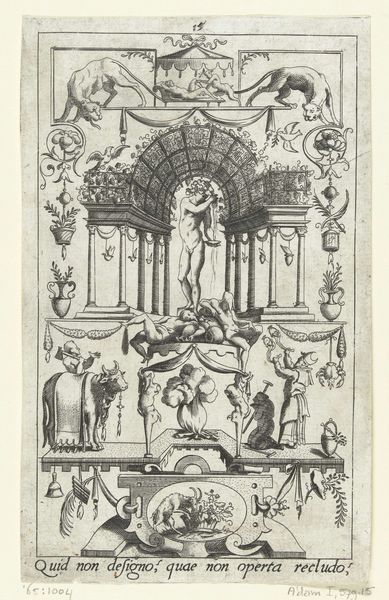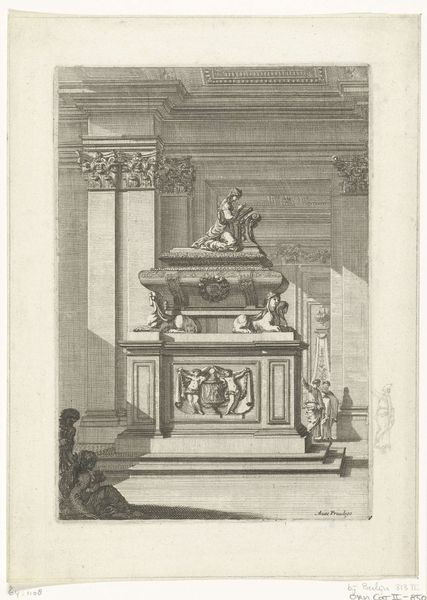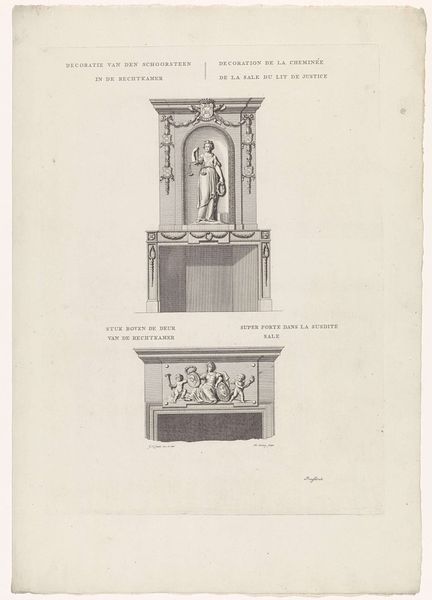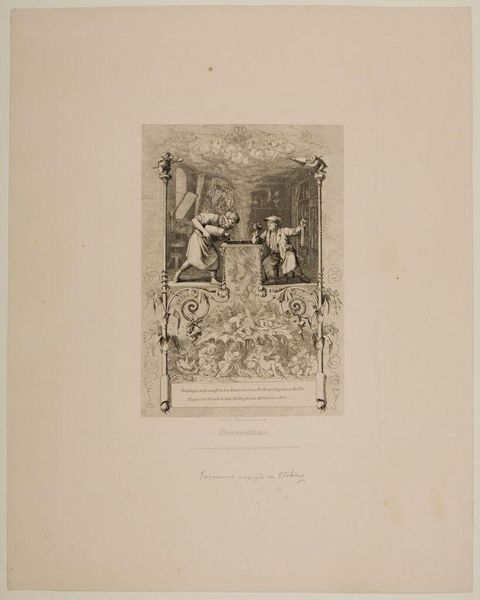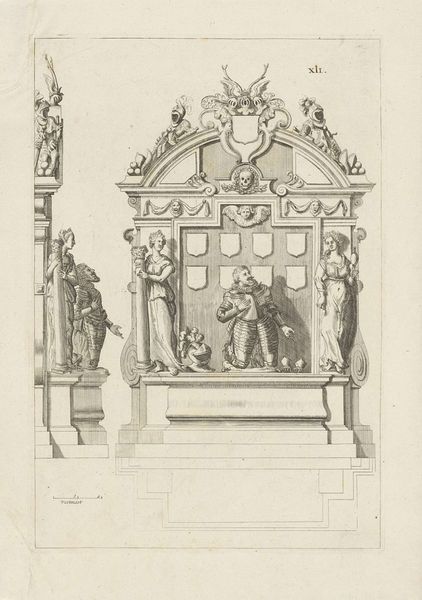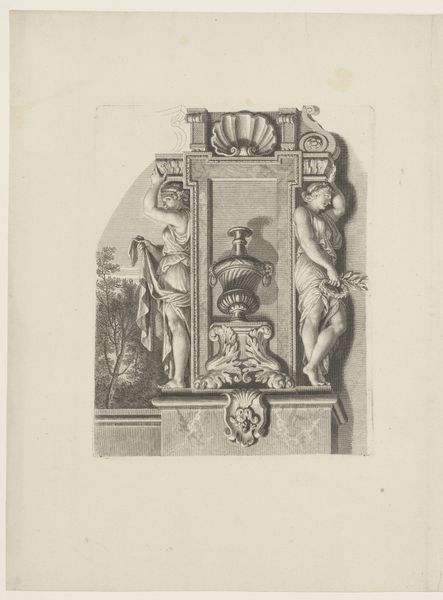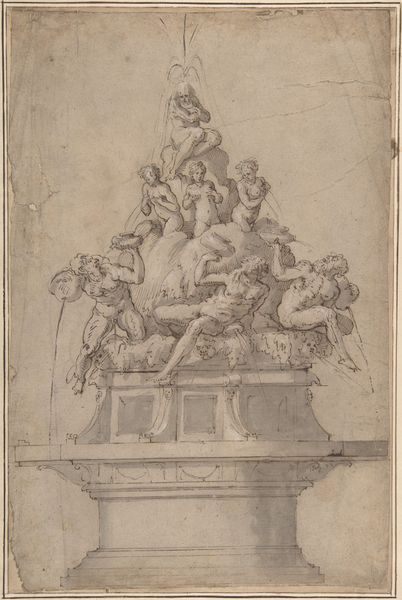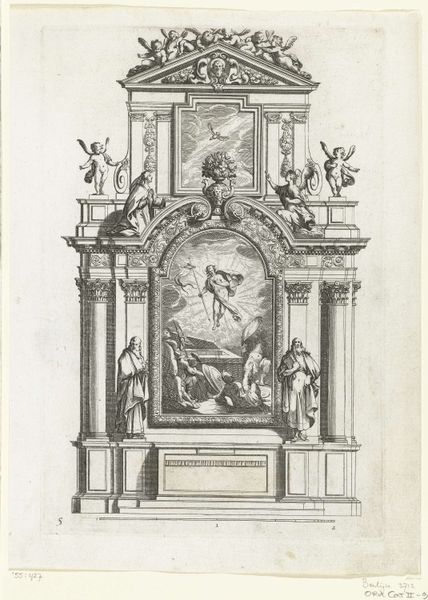
Ontwerp voor een grafmonument voor Joan Derk van der Capellen tot den Pol after 1785
0:00
0:00
drawing, paper, ink, architecture
#
drawing
#
neoclacissism
#
allegory
#
paper
#
ink
#
history-painting
#
architecture
Dimensions: height 315 mm, width 204 mm
Copyright: Rijks Museum: Open Domain
Editor: This is "Ontwerp voor een grafmonument voor Joan Derk van der Capellen tot den Pol," a drawing in ink on paper by Bartholomeus Ziesenis, created after 1785. It’s a proposed design for a grave monument, and my immediate feeling is one of rather heavy classical drama, full of figures and architectural details, despite the monochrome palette. What do you see in this piece, looking at it from an iconographic perspective? Curator: It's fascinating how Ziesenis uses the visual language of Neoclassicism to enshrine not just a person, but a set of ideas. Note how the figure of what appears to be virtue, holding a flame, dominates the central space. What does that flame evoke for you? Think about its symbolic weight. Editor: I suppose the flame is a pretty standard symbol for enlightenment, or perhaps remembrance? Something eternal... Curator: Precisely. Now, consider the figures surrounding her – they seem to represent attributes like Justice or Liberty. Notice too, how Ziesenis stages this scene within a classical architectural framework, imbuing the entire concept with a sense of timelessness. What feelings do these loaded symbols communicate in combination? Editor: Together it creates a sense of almost reverent memorialization – turning van der Capellen into a symbol himself, or placing him in the narrative of civic virtue. Curator: Exactly! And observe the grieving figures below, anchoring the idealized scene in human emotion. Their presence acts as a bridge connecting the earthly and the abstract realms, reminding us of the human cost that comes with upholding ideals. Editor: That contrast hadn't struck me so clearly before, seeing how the grief sits below this idealized space. This really makes me think about how public monuments are designed to shape memory and meaning. Curator: Indeed. Through carefully chosen symbols and their arrangement, the design perpetuates the memory of the deceased and his legacy in very particular terms. Thinking about how different symbols shift over time, what readings could this present to future generations? Editor: It is powerful to consider how symbolic meanings evolve, prompting different understandings of this monument in various cultural and historical contexts. Thank you for unveiling the multiple layers of symbols in this piece and their powerful connections.
Comments
No comments
Be the first to comment and join the conversation on the ultimate creative platform.

